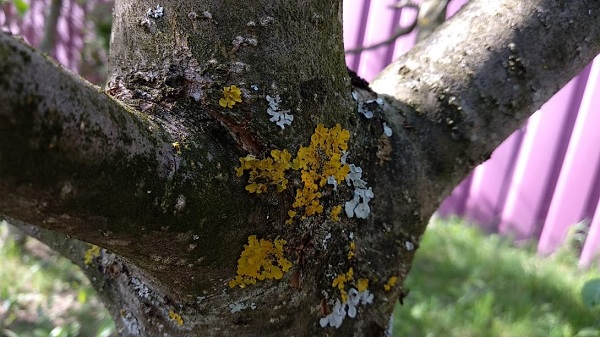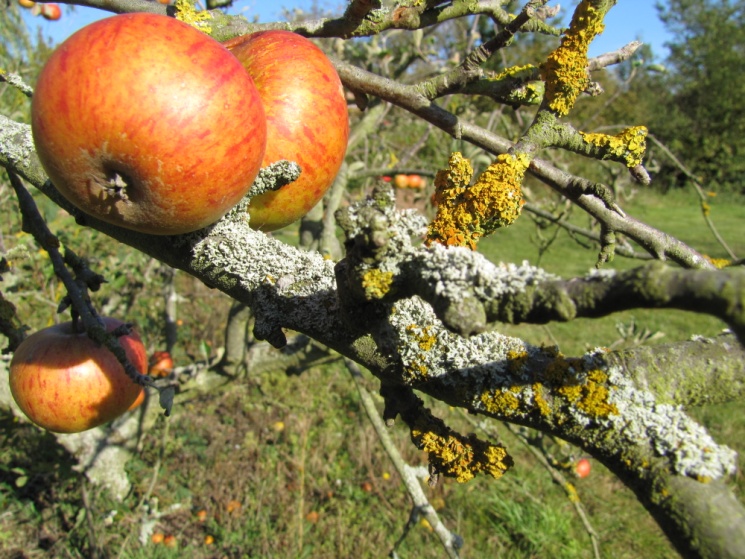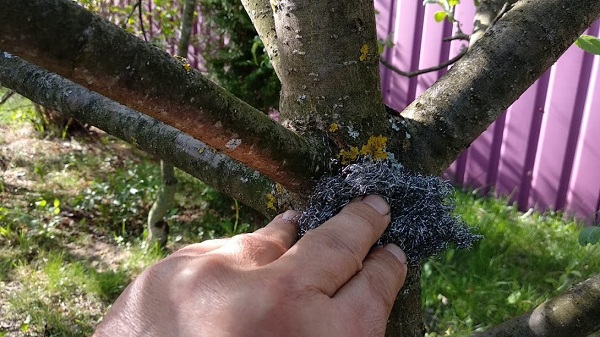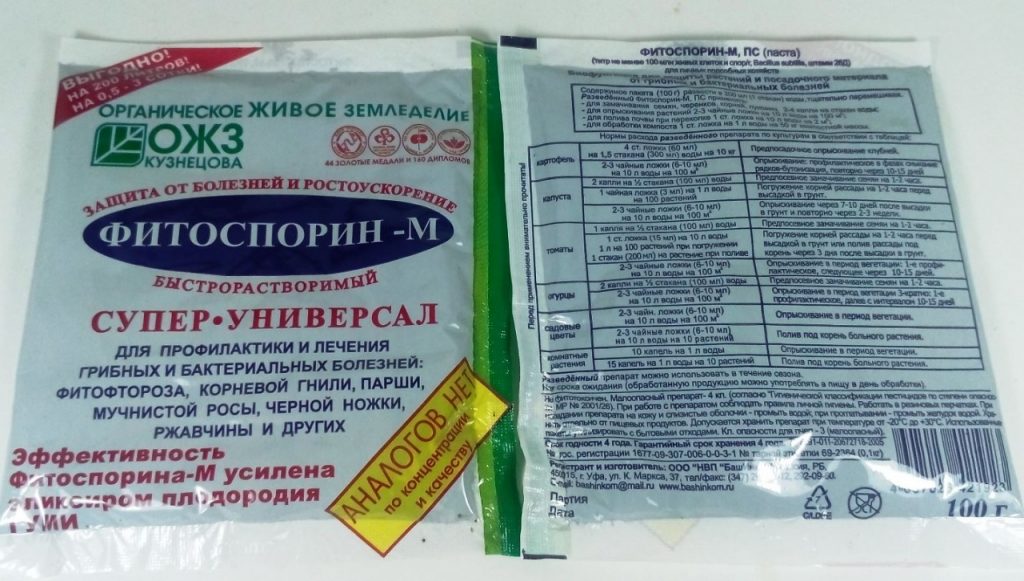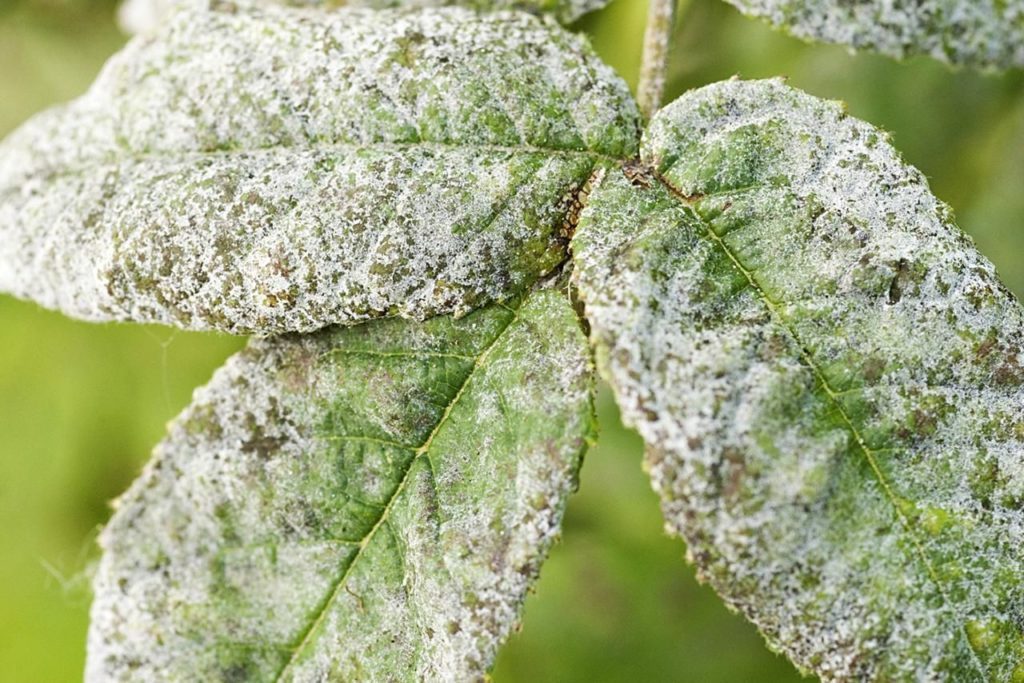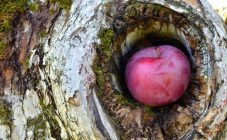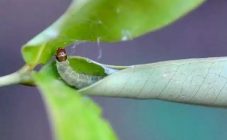Content:
During the cultivation of an apple orchard, gardeners often notice that a white bloom appears on the tree trunk. It is urgent to get rid of the fungal infection. The bark of the tree suffers from this disease, which is slowly destroyed by fungi and bacteria. The article will tell you what to do if a lichen appears on an apple tree, how to get rid of it. It is imperative to treat the tree, otherwise it will die.
What is lichen
It is worth considering a brief description of the disease in order to have an approximate idea of what will have to be removed. Depriving on an apple tree is a kind of symbiosis of fungus and algae. These 2 components have a positive effect on each other. Algae feed on moisture and mineral salts from the fungus, which, in turn, shares the sugar produced during photosynthesis.
The apple tree is covered with lichen, what should I do? First of all, you need to figure out how the disease manifests itself, is it really a lichen. The fungus on apple trees can be of several types:
- scale;
- lamellar;
- scaly;
- bushy.
The spots can also be of different colors: silvery, yellow, greenish, blue.
Why lichens are dangerous
The tree trunk is covered with scales, which allows the tree to breathe. The moss on the apple tree gradually grows and overlaps the lentils. This is dangerous for the tree, as oxygen supply stops.
In addition, pests live in lichens on an apple tree, which lead to the development of other diseases of fruit trees. All moisture accumulates under the fungal growths, which is why pathogenic microorganisms appear, since for them this is an ideal habitat.
Lichens usually appear on diseased trees with cracked trunks, the crown is poorly ventilated due to excessive density. In the spring there may be no flowering, and in the summer there may be no apples, because the acids contained in the lichen inhibit the development of the fruit tree.
What is the reason for the appearance of lichens
If a sooty fungus appears on an apple tree, treatment is carried out immediately. But first you need to understand what is the reason for the development of lichen on the trunk, because not all trees have it. It has long been proven that only weakened trees are infected with a fungal infection, that is, old gardens are at risk.
Why did a green bloom appear on the apple tree trunk? There is an explanation for this. There are only 3 reasons:
- excessive soil moisture;
- lack of sunlight;
- increased acidity of the soil.
Slightly less common factors:
- flooding of the root system due to the abundance of precipitation or flow near groundwater;
- lack of preventive measures;
- trees are located very close to each other, which is why they instantly become infected;
- mechanical damage to the bark;
- bark burns;
- wind carrying fungal spores.
All these factors are fundamental for the development of fungal growth on fruit trees. But the main reason is improper garden maintenance.
Signs of fruit tree disease
Mold, moss, lichen - all these are harmful microorganisms that have settled on tree trunks for various reasons. In nature, there are up to 25 species of lichens. They can be distinguished by their appearance.
The process of infection begins with the reproduction of algae on the bark of the tree (green smudges). This is due to excessive dampness in the garden. First of all, they appear in the shade. A little later, the neoplasm begins to harden and turn into a real lichen.
In addition, mushrooms can appear that are used to feeding on the tissues of trees, which causes great harm to the garden. Fungal infections are distinguished by mold and rusty deposits. With a serious lesion, drying out areas on the tree trunk are visible.
Methods for treating a fungal infection on an apple tree
What should be done to stop the development of moss on an apple tree and how to get rid of it forever? There are 3 main methods of getting rid of fruit trees from lichen: using mechanical healing, processing by folk methods, drugs. But before you start fighting, you need to prepare the garden. First of all, you should remove infected branches and those shoots that are no longer productive. The trees can then be processed like this:
- Clean the branches with a wooden scraper. A nylon tool is also suitable. A similar procedure is carried out in the spring, when the bark contains an increased amount of moisture. This makes the build-up easier to remove. After that, the treated area must be watered with copper sulfate (solution 3%), and grease with lime on top.
- You can prepare an effective remedy yourself. Take 2 kg of ash, 1 kg of salt, shavings from 2 pieces of laundry soap. All components should be combined and mixed. The finished mixture is added to 10 liters of water. Put the bucket on the fire, as soon as it boils, remove from the stove and cool. The prepared composition is used to treat the peeled bark.
- In the fight against lichen, copper sulfate has proven itself well. Take 300 g of solution per 10 liters of water. Fruit trees are sprayed with the finished product. After a week, the lichen will dry out and fall off.
Also, garden stores sell a lot of ready-made solutions for fungal infections. For several years, fast and phytosporin have remained in demand.
Preventive measures
To protect the apple tree from fungal infections, you need to regularly monitor the condition of the tree. We must not forget about sanitary care, pruning, processing sections and damaged bark, constantly feeding.
Other apple diseases and how to get rid of them
With a fungal infection of a tree, treatment must be started urgently, otherwise it will quickly die. Indeed, because of one patient, an entire garden can be damaged. Gardeners know how many diseases there are that affect fruit trees, so they carry out prevention every year. But what if you still failed to save the garden? As a rule, from year to year, gardeners suffer with the same problems. Major diseases:
- scab;
- rust;
- powdery mildew.
Each disease has its own method of struggle.
Apple scab
The scab is somewhat different from the previous disease. When infected, fruits, leaves and flowers are covered with gray-brown spots. It is considered a dangerous disease of fruit trees. The scab can hibernate in fallen leaves and throw up spores in the spring in damp weather.
First, oily spots appear on the leaves, after which they are transformed into a brown bloom. Infected leaves wilt and fall off. As a result, the fruits shrivel and do not pour. The apple can even deform to one side.
You can get rid of scab as follows:
- In the spring, even before the first leaves appear, you need to spray the ground and fruit trees with chemicals. For these purposes, copper sulfate, nitrafen (300 g of solution per 10 l of water), DNOC (1% solution) are excellent.
- At the end of April, the garden should be treated with Bordeaux liquid, cuproxate or copper chloroxy.
- During the formation of buds and after, use Bordeaux liquid of 1% solution.
- 3 weeks after the flowering of the tree, the apple tree is sprayed with phthalan, captan, tsineb compounds.
Rust
If the leaves of the apple tree are covered with brown large spots, the bark on the tree cracks as if after burns, the apples wrinkle and become covered with sores, then this indicates that it was struck by rust. This is a fungal disease that completely affects the apple tree: from the roots to the crown. If you do not take any measures, then over time, the affected branches will dry out, and then the whole tree completely. Therefore, it is impossible to hesitate with treatment. They start in early spring:
- You should start by cutting off the affected branches, which are removed 10 cm from the healthy part.
- Sections should be disinfected with copper sulfate (5%), and then covered with garden varnish.
- Next, you should treat the tree with Bordeaux liquid (1%). 3 sprays per season will be enough.
Powdery mildew
Powdery mildew is another common disease of fruit trees. It is caused by a fungus that hibernates in the buds of affected shoots. A characteristic sign of the disease is a dense silvery coating on the shoots. If you do not start treatment on time, this will lead to drying of inflorescences and leaves, to shedding of ovaries.
The main ways to get rid of powdery mildew:
- Throughout the growing season, you need to cut off the affected shoots.
- After the end of the flowering period, the apple tree is sprayed with a home preparation.
- After harvest, trees must be treated with copper or iron sulfate. Alternatively, a 1% Bordeaux liquid solution is suitable.
- After processing, all fallen leaves are collected and burned.
What causes diseases of fruit trees and how to deal with them
Diseases on fruit trees are of a different nature:
- fungal;
- bacterial;
- cancerous.
Depending on the degree of infection and the nature of the disease, treatment is carried out. The first thing to do is to destroy the damaged areas: leaves, branches, bark. This will help stop the spread of the infection.
Fungal diseases can be cured by spraying the crown of a tree and a tree trunk circle. For these purposes, chemical and organic products are perfect. The most popular are:
- copper sulfate (2 tablespoons of copper sulfate + 1 tablespoon of liquid soap + 12 liters of water);
- colloidal sulfur (80 g sulfur + 10 l of water);
- bordeaux liquid (300 g of copper sulfate + 300 g of lime + 10 liters of water).
At the initial stage of the development of infection, trees are sprayed. In the summer, a 1% solution of Bordeaux liquid will be required, and in the spring and autumn periods - 3%. Bacterial and cancerous infections are very difficult to cure.
Another serious disease is cytosporosis. During the infection, the bark of the tree is affected. The disease progresses rapidly. Cytosporosis results from poor care and improper watering.
As a preventive measure, the crown of trees is sprayed with copper sulfate. You can also stop the disease: you need to cut off all the affected areas, and clean the bark. This is a dangerous disease that destroys the tree from the inside.
Moniliosis appears during the ripening of the crop and affects the fruits. The disease is very easy to recognize. The fruits are covered with brown spots. Affected apples are removed, the trunk circle is dug up.
A bacterial burn can affect all organs of trees. This is especially true for young shoots and leaves. If the plant is not treated, then after a month it completely dies.
The root system can also become infected. Root cancer falls off through wounds and cracks. As a result, the root system stops developing normally. Cancer treatments are very complex. All growths on the roots must be cut off and processed in copper sulfate.
It is urgent to get rid of summer pests that infect fruit trees in order to prevent contamination of a healthy garden. Treatment of lichens is necessary, because they prevent the tree from developing normally and other pests of fruit trees remain under them.
